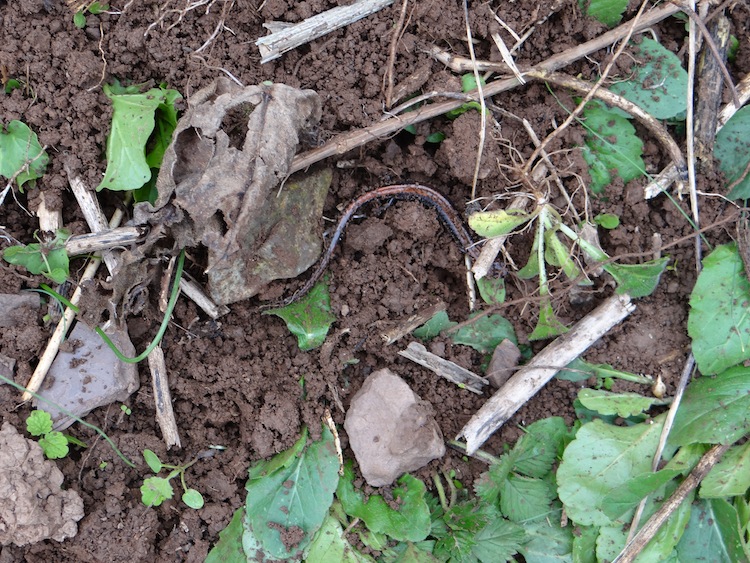As I was digging up Virginia creeper vines and uprooting wild blackberries by the stone wall, I had to move a number of rocks as well. Suddenly I noticed movement and a familiar shape that brought me back 40 some years to when I was a kid walking in the woods with my brothers, turning over logs. Just like then, I was excited to discover a salamander! This little guy was an Eastern Red Back Salamander, one of the most common types found in our area. That may be so, but I can tell you that when we were purposefully looking, we could hardly ever find any!
Red backs are totally terrestrial salamanders, unlike others that spend their lives in or near water. It is named for the reddish stripe that may be present running along the back to its tail. However, this salamander may exhibit other color phases which either lack an evident dorsal stripe or change it to orange or yellow. The entire body may be red. The brighter color phases also may predict salamander behavior: the dark phase tends to run and hide while the more colorful will not. Scientists believe that brighter color is a warning sign to predators that something isn’t quite right, so don’t eat it!
Redbacks are small,a bit over 2 inches and considered woodland amphibians living under debris like bark and rotten logs and rocks. They have no lungs, but breathe entirely through their skin so it is important that they keep moist at all times. This may be why they can be hard to find since there is a narrow temperature range in which they thrive comfortably. Above 75, it’s too hot and they have to burrow. Below 50 degrees, they have to hibernate below ground.
They are carnivores that have long sticky tongues like frogs. They’ll eat worms, small ants, slugs, small spiders and crickets and other small invertebrates, like other salamanders. They spend a fair amount of their lives tunneling in the debris after food or for protective burrowing which helps the soil break down and improves it.
Salamanders are a bit like salmon, in that they return to their place of birth to breed and lay eggs. The female lays grapelike clusters inside rotted logs or beneath rocks and proceeds to guard them by curling her body around her eggs for a couple months. The little salamander nymphs hatch looking like mini-adults.
One interesting factoid: salamanders can regrow their tails, arms and legs. Pretty impressive!




